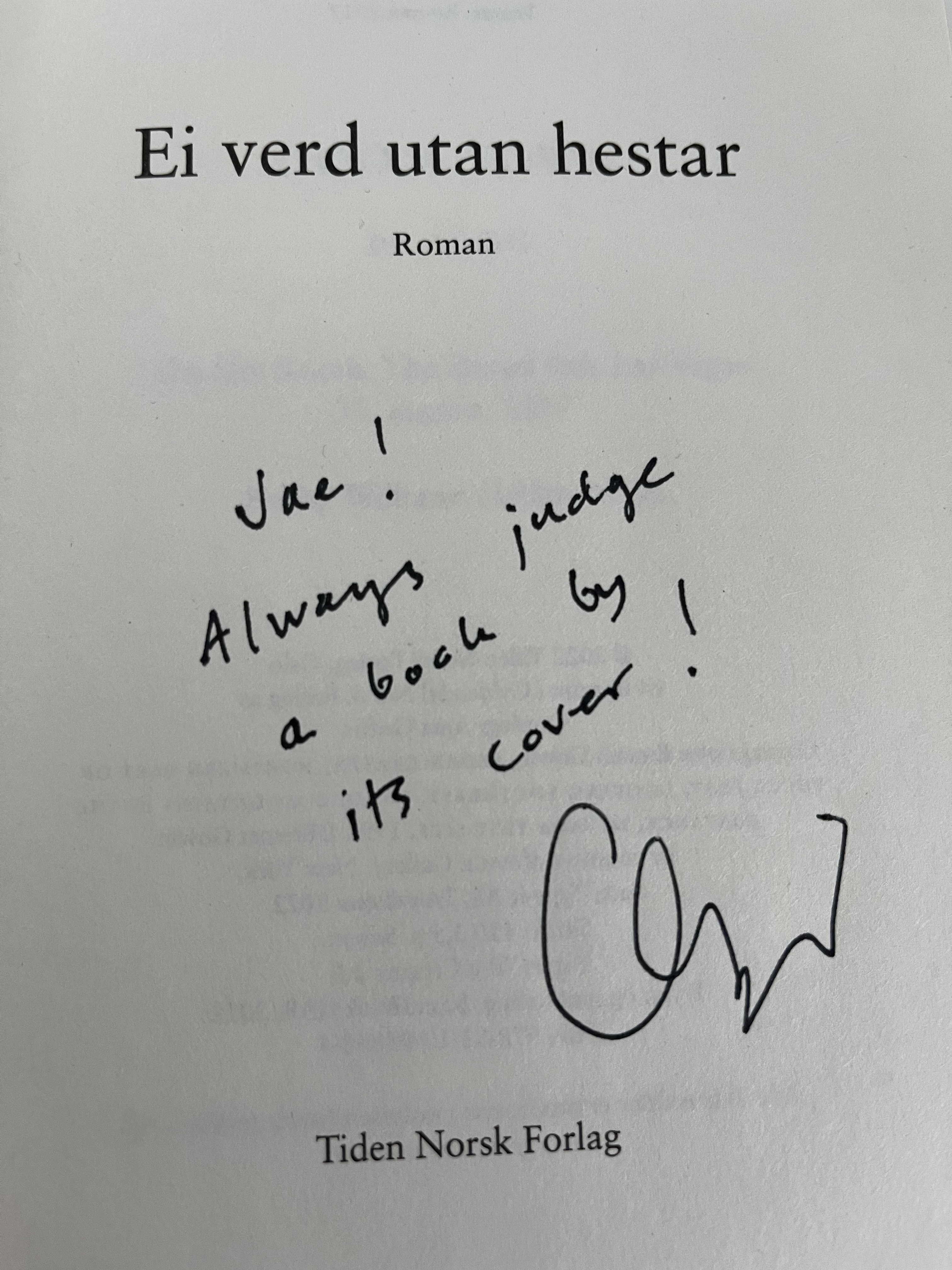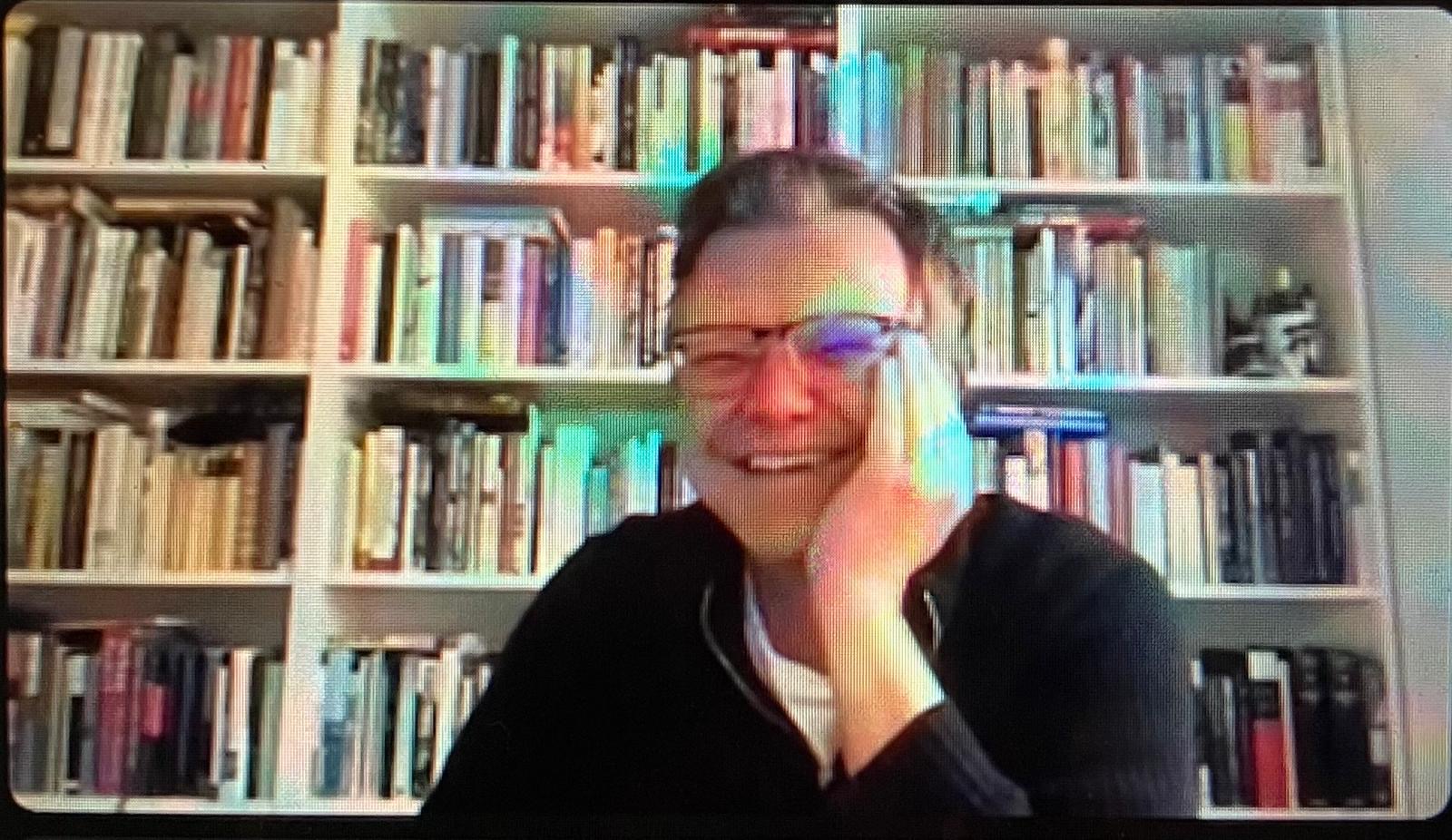“In every life there remains something unlived just as in every word there remains something unexpressed. Character is the obscure power which sets itself up as the caretaker of this untouched life: it jealously watches over what has never been, and without you wanting it, inscribes its traces on your face. This is why the new born baby seems to already resemble the adult: in reality, there in nothing in common to the two faces except, in the one as in the other, what has not been lived…This—what has never been—is taken up by the idea of happiness. It is the good that humanity receives from the hands of character.” —Giorgio Agamben, The Idea of Prose, trans. Michael Sullivan and Sam Whitsitt (Albany: State University of New York Press, 1995), p.93.
As many of you know, our dear friend, colleague, and irreplaceable member of the Editorial Collective, Øyvind Vågnes died on 7 January 2025. We were, perhaps as always, unprepared for this event. Øyvind was kind, intelligent, and beatific with his time. He had character. A rare trait that made us all realize that the idea of happiness comes when you accept that life “releases the fortunate man from…the net of his own fate.” Walter Benjamin wrote this in an early essay entitled “Fate and Character.” It is indissolubly linked to his wager that “happiness for us is thinkable only in the air that we have lived, among people who have lived with us. In other words, there vibrates in the idea of happiness…the very despair and desolation which were ours. Our life, it can be said, is a muscle strong enough to contract the whole of historical time.” I mentioned several times that I wanted to share these words with Øyvind, promising time and again to write him these passages. I have done so here, but I refuse to say belatedly for within this in-between time one can neither be too late nor anticipate what is to come. One can only maintain a fidelity to the event of a life full of promise, happiness, and friendship.
Of the images that I still have, I see his big Cheshire Cat smile appear as I tell stories about parenting or absurdist tales of life at an American university. At times, he would smile and, then, like a beautiful wave, his smile would break into a sincere heartfelt laugh. It is the singularities of a person that survive. For us, his smile, gentleness, and his ranging intellect.
We spoke of many subjects over the years. For each, no matter how complex or at the very limit of his knowledge, Øyvind offered real insight, a vital curiosity, and new ways to encounter ideas and patterns. Ideas were a vocation for him. This is one of the qualities I loved in him. In our correspondence we often wrote about our kids and becoming parents—not just when they were born but becoming another as a parent, learning anew at each inflection point of our kids’ own maturation and becoming themselves. The double pendulum swing of parenting: an initial pattern becoming chaotic and unpredictable; careening between confidence and bafflement, the lines marked transform absolute belonging into a shiver of stark loneliness.
Part of our lives now include strange archives of email correspondence. Archives comprised of sent, read and unread messages, threaded conversations. Incomplete and maddening archives surviving somewhere between chaos and composition. Within such archives we encounter the voices of our friends. This morning I rediscovered one when I sat down to write this memorial. While looking for something else, the archive, without me asking, retrieved this via its aleatory roll-of-the-dice. As I write this my family has just returned from visiting our cousins in Italy again in 2025:
4 May 2023
I wish I was on my way to Italy too! Bergen is still too damn cold for May. We’re fine, although I don’t know…empty nest syndrome, which always seemed like a thing of the distant future, is right around the corner, although I’m not sure I worry so much about that now!
All best,
Øyvind
I had forgotten this part of the exchange. What I recalled was discussing his new novel, Ei verd utan hestar (2022), which is about history as a past and future event in time, as well as his desire to have an Emmet Gowin photograph for the cover. I had recently spent some time with Emmet at our friend’s wedding and at an opening in Charlotte. But I did not recollect the directness he shared about parenting, but that honesty always left me assured and thankful that he was willing to share some uncertainty and intimacy with me.
Øyvind did send me his latest novel. “It would be a pleasure to know you had my novel,” he wrote me, adding, “at least you’ll be able to appreciate the cover, with the Gowin photo!” It is a beautiful book cover, with Emmet’s black-and-white image of the Nevada Test Site (1996), the Sedan Crater peering ominously from below, out from a rent within the fabric of life itself. An absence that survives as a force: dislocating, eroding, wending its way through our lives. This is mirrored in the novel: the years 1863, 2003, 2036; the places Bergen, a U.S. Civil War battleground, the Nevada desert marked by nuclear tests. In 2003, a man, Torjus Knudsen, travels with his son to the United States to participate in the 140th anniversary of the Battle of Chickamauga (1863), where his great-grandfather fought. But this father understands little of his son’s interest in the past. This lack of comprehension is a shield from fate as he knows the trip could lead him back to the daughter he had with another woman. This daughter, Chloe, then returns to Norway in 2036 for her father’s funeral in Bergen. For Øyvind, this complex of image and text beg the questions: What remains? What evidence of a life? What is shared and survives? Traces, thresholds, gestures. A narrowing of the eyes and perhaps a smile. It is the inscription Øyvind wrote me on the on the title page that remains indelibly marked in my memory. A few words that transmit our shared love of Paul Celan, Cecil Taylor, and Italo Calvino, let alone Bob Dylan—Øyvind loved a piece I had written about Dylan and the phrase “he became a column of air.” Here is the brilliant inscription; it always makes me happy to read it:
Within these words from one friend to another lies the subterranean truth of studying visual culture: there is no secret, nothing hidden or obscured, because it is all right here-and-now inscribed on the surface—on the very face of things—and so we learn to read these lines of fate and character.
On behalf of the entire Editorial Collective, these words of memory for our friend and the idea of happiness that he gave us.
Marquard Smith’s screenshot of Øyvind Vågnes during a JVC editorial collective meeting online (2024).
Jae Emerling is Professor of Modern and Contemporary Art History in the Department of Art & Art History at UNC Charlotte, the Associate Dean for Research for the College of Arts + Architecture, and editor-at-large at the Journal of Visual Culture.
Jae Emerling, “For Øyvind (1972-2025),” JVC Magazine, 20 June 2025, https://journalofvisualculture.org/for-oyvind-1972-2025/.






